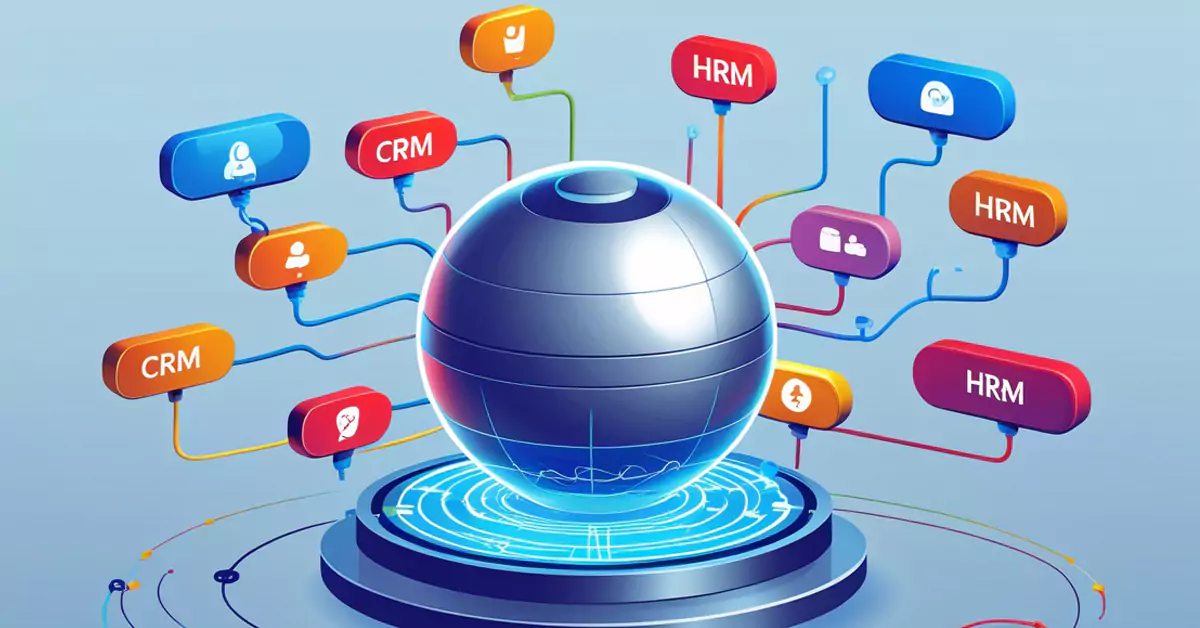Let’s not sugarcoat it: running a business these days means you’ve probably got a stack of software platforms—ERP, CRM, HRM, accounting tools, maybe even some weird custom app your cousin built in 2009. If these systems aren’t talking to each other, you’re doing way more work than you need to (and probably making mistakes along the way).
Why Even Bother Integrating?
When your business tools don’t sync up, you get messy data, a ton of duplicate work, and—let’s be honest—a few more gray hairs. Here’s what integrating your ERP with CRM, HRM, and accounting can actually do for you:
- Unified Data Access: No more hunting through five apps for one customer’s order.
- Real-Time Collaboration: Teams can actually work together without emailing spreadsheets back and forth.
- Streamlined Operations: Automated workflows mean fewer manual steps, which means less human error and less time wasted.
- Better Decision-Making: When all the data’s in one place, you see the big picture—fast.
Key Integration Points
You can’t just connect everything willy-nilly. Here’s where it really counts:
- CRM Integration
- Sync up customer records, sales pipelines, and every little customer interaction.
- Makes invoicing, order fulfillment, and customer support way smoother.
- Sales and support teams stay on the same page—finally.
- HRM Integration
- Connect employee profiles, payroll, performance, and leave management.
- Helps with accurate reporting, legal compliance, and not screwing up someone’s paycheck.
- HR and finance can stop playing phone tag.
- Accounting Tools
- Real-time sync for transactions, tax stuff, and your general ledger.
- Keeps your books cleaner and your finance folks happier.
- No more “Wait, where’d that invoice go?”
Integration Approaches
You’ve got options—some easier than others, depending on how much time, budget, and developer mojo you’ve got:
- Native Integrations
- Some ERP platforms come with built-in connectors for popular tools (think Salesforce, BambooHR, etc.).
- Usually plug-and-play, but can be limited if you need something fancy.
- API Integration
- Use REST or SOAP APIs to build custom pipelines between your ERP and other apps.
- Super flexible, but you’ll need devs who know what they’re doing.
- Good for when you’ve got weird, unique processes.
- Middleware Solutions
- Tools like MuleSoft or Dell Boomi act as translators between all your different systems.
- Great for linking lots of apps with minimal custom code.
- Not always cheap, but can save your sanity if you’re juggling a bunch of platforms.
Steps for a Successful Integration
Don’t just start connecting things and hope for the best. There’s a process:
- Map Business Workflows
- Figure out exactly where your data needs to go, and what needs to happen along the way.
- Draw it out—sticky notes, whiteboard, whatever works.
- Choose the Right Integration Strategy
- Decide if you’re using a built-in connector, custom API, or middleware.
- Weigh the pros and cons for your specific situation (cost, timeline, complexity).
- Ensure Data Consistency
- Set up data mapping and validation rules.
- Make sure “John Smith” in CRM is the same “John Smith” everywhere else.
- Clean up your existing data if it’s a mess.
- Implement Security Protocols
- Don’t skimp on this—secure your connections, use proper authentication, and follow compliance regs.
- Audit your integrations regularly to catch any leaks or weirdness.
- Train Staff and Monitor Performance
- Show your team how to use the new workflows.
- Keep an eye on things—if something breaks, fix it quick.
- Collect feedback and tweak processes as needed.
Extra Tips & Insights
- Don’t Overdo It: Not every tool needs to be integrated. Focus on what actually makes life easier.
- Start Small: Pilot integrations with one department or workflow before rolling out company-wide.
- Budget Time for Maintenance: Integrations aren’t “set it and forget it.” Plan for updates and fixes.
- Get Buy-In: People hate change—explain the benefits and get staff on board early.
- Think Long-Term: As your business grows, your integration needs might change. Build with flexibility in mind.
The Bottom Line
Connecting your ERP with CRM, HRM, and the rest isn’t just some IT checklist item—it’s a game-changer. You get cleaner data, smoother workflows, and teams that actually work together (instead of stepping on each other’s toes). If you map it out, pick the right tools, and keep an eye on things, you’ll save time, money, and a whole lot of frustration. Plus, your whole business runs like it’s supposed to—finally.
